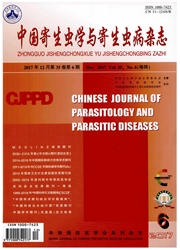

 中文摘要:
中文摘要:
在恶性疟原虫与人体细胞相互作用的过程中,子孢子通过黏附肝内皮细胞受体侵入肝脏,裂殖子通过黏附红细胞表面受体侵入红细胞,感染红细胞利用其表面膜蛋白与人体重要器官的血管内皮细胞表面分子发生黏附,最终导致血流受阻。这些黏附过程均是虫体蛋白与宿主细胞表面带有负电荷的多糖分子相互作用的结果。本文对恶性疟原虫与人体细胞相互作用的分子机制作一综述。
 英文摘要:
英文摘要:
In the interaction of Plasmodium falciparum with human cells, sporozoite adheres to the receptor of the liver endothelial cell, then invades to liver. Merozoite binds to the surface of red blood cells, and invades to erythrocyte. The adhesion of membrane protein of the infected erythrocytes to the surface molecules of vascular endothelial cell in the vital organs leads to the obstruction of blood circulation eventually. The adhesion is mediated by interaction between parasite-derived ligands and the negative charged polysaccharides on the surface of host cells. This review is to discuss the molecular mechanisms in the host-parasite interactions.
 同期刊论文项目
同期刊论文项目
 同项目期刊论文
同项目期刊论文
 期刊信息
期刊信息
